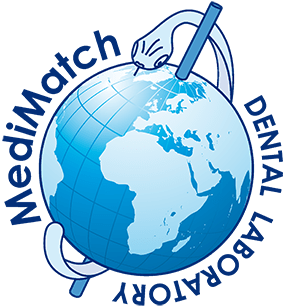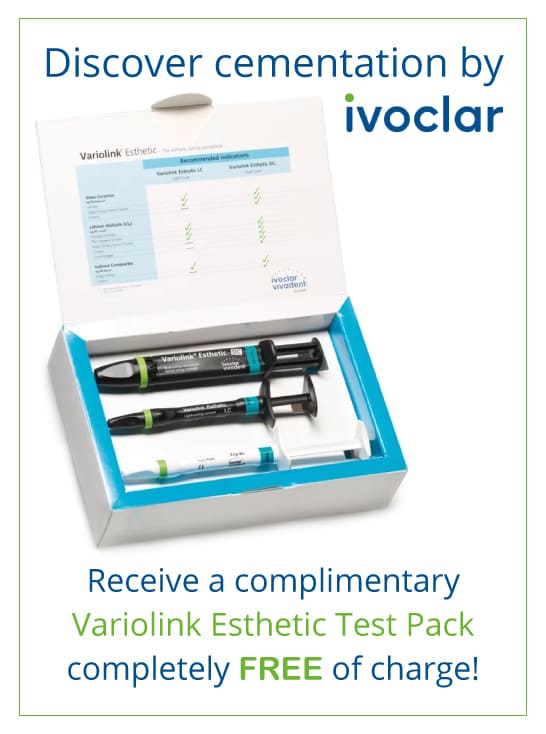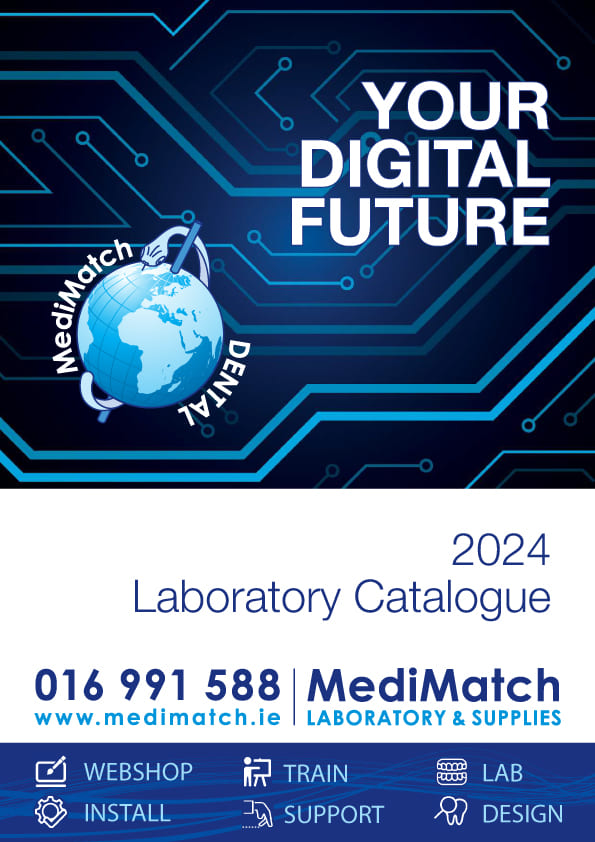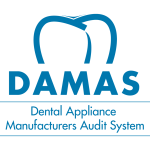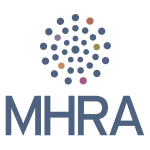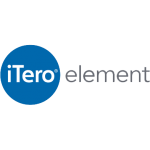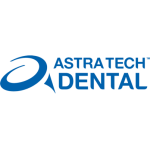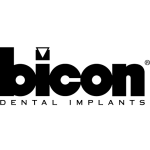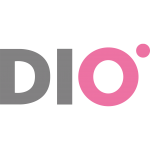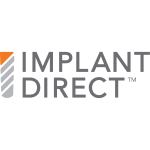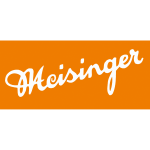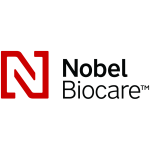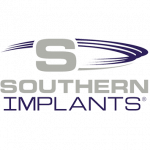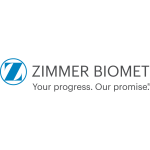Telescopic Denture Clinical Guide
Overview
MediMatch is one of only a few dental laboratories in Ireland to be able to offer a compre-hensive telescopic denture service. The telescopic denture technique was originally developed in Germany over thirty years ago, and although currently not yet widely adopted in Ireland, it has been used with great success in Europe, particularly in Germany, Switzerland and Sweden.
Telescopic dentures can be successfully constructed using a minimum of two viable teeth, typically the upper or lower canines, but are ideally supported by four or six teeth. The teeth are typically prepared in much the same way as for a normal bonded crown, but allowing for a double thickness of alloy. Milled parallel primary metal copings are constructed to fit the prepared teeth and cemented in place. Precision-fit secondary metal copings are constructed in the laboratory and then welded to the chrome cobalt denture framework.
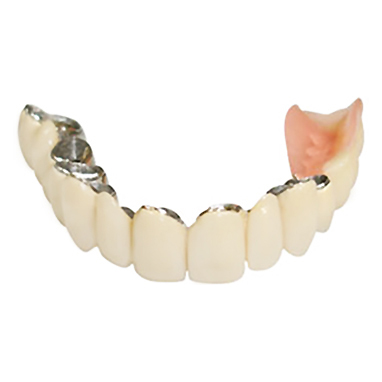
MediMatch TIP1
Telescopic dentures are becoming an increasingly attractive treatment option for patients who are suitable for overdentures, but are not suitable for or cannot afford an implant-retained prosthesis.
Benefits of Telescopic Dentures
- Improved aesthetics and speech, compared to clasp-retained partial dentures.
- Preservation of alveolar bone.
- Enhanced chewing efficiency compared with conventional dentures.
- Tooth and soft-tissue borne, providing maximum load distribution, preserving remaining natural teeth.
- Less expensive option than implant – retained dentures.
MediMatch Telescopic Denture Clinical Guide
The following suggested telescopic denture clinical technique guide is not intended to be prescriptive – it is recognised that there are several alternative techniques available for use by clinicians, but observing the steps below will ensure that MediMatch produces telescopic dentures of consistently high quality, and will significantly reduce the potential for remakes.
STEP 1 – Case Discussion / Special Tray
Please forward disinfected* primary (study model) impressions to MediMatch, who will construct a special tray and then call you to discuss your individual case requirements.
STEP 2 – Tooth Preparation and Special Tray Impressions
Prepare the teeth which will bear the primary copings in much the same way as for a normal bonded crown, but allow for a double thickness of alloy in the axial and occlusal planes and a minimum clearance of 1.5mm – 2.0 mm interdentally.
MediMatch TIP2
Ensure that the preparations are as parrallel as possible – MediMatch will mill the primary copings with parallel sides to create a common axis of insertion for the secondary copings.
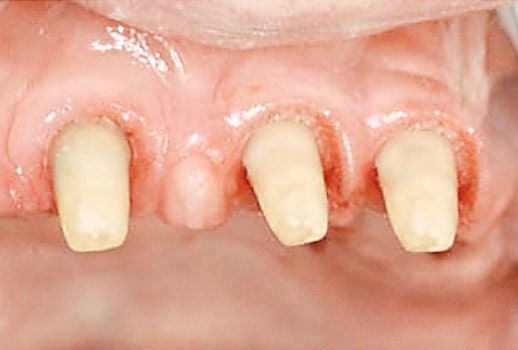
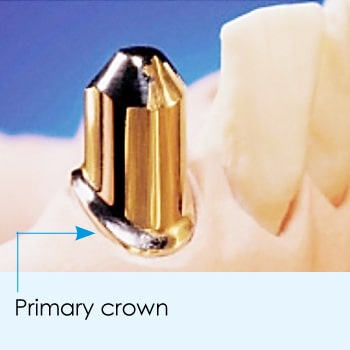
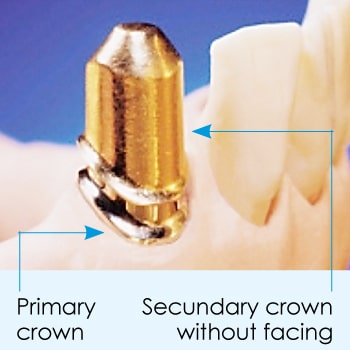
Take a secondary special tray impression* of the prepared teeth, disinfect* the impression and arrange for shipment to MediMatch as soon as possible, specifying the type of alloy required for construction of the primary copings.
MediMatch TIP3
Precious metal alloys are recommended for telescopic denture copings as they provide superior retention. It is important that the same alloy is specified for both primary and secondary copings.
Non precious is more cost effective, retention can be increased with inserts or spray.
STEP 3 – Construction of Primary Copings
MediMatch will cast the special tray impression and then manufacture the primary copings, which include retention beads for added stability at the pick-up impression stage.
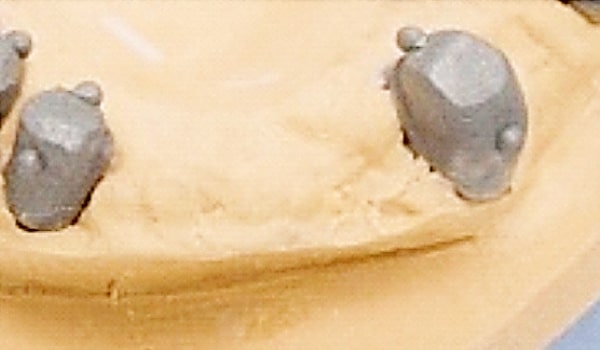
STEP 4 – Primary Coping Try-In and Bite Registration
Carefully place the primary copings on to the prepared teeth, ensuring that they fit snugly, with no lateral movement. Do not cement the copings at this stage.
- Take a pick-up impression** using the special tray and an elastomeric impression material of choice.
- Record a bite registration**.
- Disinfect the primary copings and bite registration and return to MediMatch.
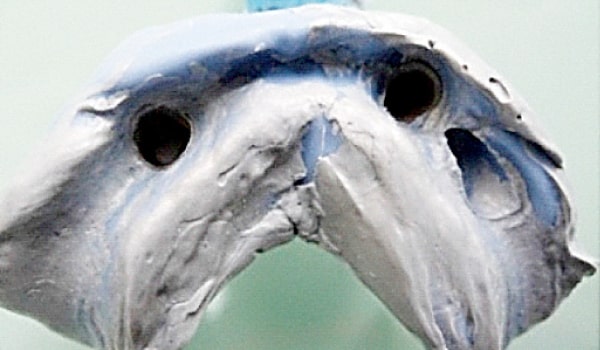
* See also: Disinfection of Impressions, Wax Bite Blocks and Appliances
** See also: Recording a Bite Registration for the Edentulous Patient
Legal disclaimer
In addition to MediMatch’s normal terms and conditions we would like to point out that:
- This protocol is based on very limited experience Medimatch has with their cases and should only be used as an indication and not restrictive in any way or form.
- This protocol was not based on experience in a clinical environment. Clinicians will use their own technique, according to individual experience and training.
- This protocol should not be followed if the circumstances are different or if in any way or form it is clinically not appropriate to follow it even if the circumstances are similar as in the protocol. Each clinician should make their own decisions and not be restricted to following a protocol made by Medimatch Dental Laboratory Ltd.
- MediMatch Dental Laboratory Ltd is in no way liable for any clinical procedures and will not take responsibility for the use of the content of this protocol in a clinical or non clinical environment. Each clinician is ultimately responsible for their own clinical decisions regardless of any advice given by MediMatch Dental Laboratory Ltd in any form.
